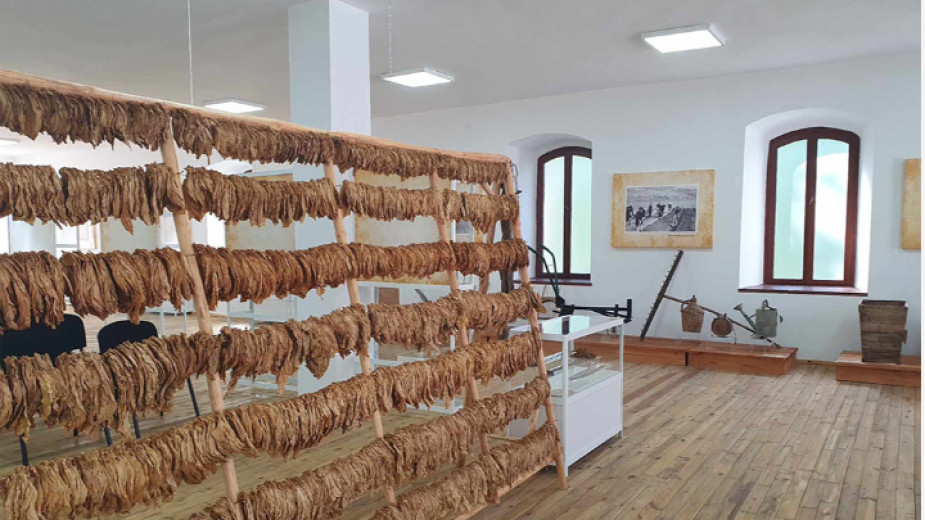 10
10
Once upon a time, the best tobacco in Bulgaria was said to have been produced in the Eastern Rhodopes, in the vicinity of the town of Ardino. This tobacco was of the most aromatic oriental variety and was mainly used for export. It was much sought after by the world's largest cigarette manufacturers and tobacco magnates such as Philip Morris. The almost two-century-old tradition of tobacco cultivation in Bulgaria is about to be lost to history. For nearly a decade, the main livelihood of the people of Ardino has been replaced by other businesses and no one sows tobacco in the fields anymore. Locals still tell stories of tobacco cultivation that are now unlikely to ever happen again. For example, that with the tobacco harvested and sold from just one season, an ordinary farmer could buy a home in the big city, etc. Tobacco meant freedom for us - says one of the residents of Ardino. People decided for themselves how much to sow and what yields to get at the end of the year - he says.
The first museum collection dedicated entirely to the tobacco industry was opened in the Municipal History Museum, so that the history of the region's livelihood would not be forgotten.
And luckily so, for it was a glorious time for Ardino. At the beginning of the 20th century it was one of the most important tobacco-growing regions in the Xanthi region. At the turn of the century there were two large warehouses where tobacco was processed, and after the socialist revolution in 1944 a large factory was built. "There are reports, which are also mentioned in the museum collection, that the Ardino region has become the top producer of tobacco in the whole Kardzhali region," says Taner Chobanov, curator at the Ardino Municipal Museum.
"Growing tobacco was back-breaking work, people would get up at the crack of dawn to go to the field and pick the leaves. At noon, when the heat became unbearable, they would go home, but not to rest - they would begin to string the leaves from the tobacco they had gathered. Their fingers were so blackened by the tar that they could not wash them. Ten years ago there was not a family that did not grow tobacco. It was brought to these lands by locals who worked in the tobacco warehouses in Xanthi. They smuggled the seeds secretly because in the early 19th century in the Ottoman Empire it was forbidden for Muslims to grow tobacco. The conditions for growing it were very favourable, although the farm fields were small and dispersed, but the soil itself was extremely fertile, and for this reason tobacco was grown in large quantities - mainly oriental varieties and, more recently, Krumovgrad varieties."

The first records of tobacco cultivation in Ardino date back to 1847, when the settlement was called Egri Dere. The French traveller Auguste Vikenel passed through it, and was impressed. He made the first detailed description of the Rhodope Mountains in his travel account, and also wrote a report to the Director-General of Tobacco in Paris, mentioning the tobacco produced in the Ardino region.
Such a rich history could not fit into one small corner of the Ardino town museum. That is why, at the idea of the municipality, the entire second floor, which was previously used as a warehouse, has been dedicated to the Tobacco Museum.
"Before we set up the museum, we first did research. We visited several villages in the Krumovgrad region where tobacco is still grown, as well as nearby villages where this crop was once cultivated," says Taner Chobanov:

"We made sure that when the visitors walked into the museum, they could follow the entire cycle of tobacco - starting from ploughing the fields, preparing the seedlings, weeding, then planting the seedlings, hoeing, picking the leaves, then drying them, baling the tobacco and buying the produce from the tobacco warehouses. This is how the permanent exhibition 'Tobacco Production and Processing in Ardino' was created. Since the first news about the museum appeared in the media, we have received many calls from people, most of whom are researchers of tobacco in our lands, but also ordinary growers. All of them were very willing to come and help. So I hope that in just 1-2 years the Tobacco Museum in Ardino will become one of the most attractive museum collections in Bulgaria."
This year, 2025, marks 1160 years since the baptism of our Bulgarian people into the Orthodox faith and 1170 years since the creation of the Bulgarian alphabet and Slavic literature. On this occasion, the Varna and Veliki Preslav Bishopric Metropolis..
Bulgaria celebrates 149 years since the April Uprising – an event that led to the liberation of Bulgaria after almost five centuries of Ottoman rule. Today, nearly a century and a half later, we must not forget that every participant in the April..
The introduction of the subject "Virtues and Religions" in schools is not aimed at indoctrinating children, but at informing and educating them. Faith is something personal, Patriarch Daniil said in an interview for public service TV BNT. “Faith is..
A gold coin minted during the reign of Emperor Justinian I, ruler of the Eastern Roman Empire, was discovered during excavations at the Tuida Fortress..

+359 2 9336 661
